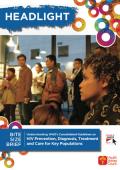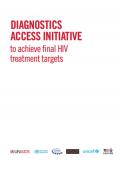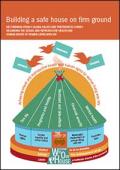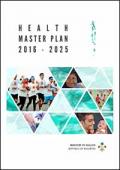What's New
Displaying results 3131 - 3140 of 4914

Resource | Guidelines,
This issue of Bite Size Briefs is a summary of the Consolidated Guidelines on HIV Prevention, Diagnosis, Treatment and Care for Key Populations, which was published by the World Health Organization (WHO) in July 2014.
The Consolidated Guidelines on HIV Prevention, Diagnosis, Treatment and Care for Key Populations aim to support countries provide more effective and comprehensive HIV services for the key populations, including men who have sex with men (MSM) and transgender people and include discussion of specific issues relating to adolescent key populations. Although, there is still a lack of evidence to support recommendation of PrEP to transgender women. In this brief we highlight the recommendations made in the Guidelines that are most relevant to MSM and transgender people.

Resource | Publications,
The 2010–2016 Philippine Plan of Action to Control TB or PhilPACT was formulated through a participatory process to serve as the country’s road map in reducing the problem of tuberculosis. It was issued by the Department of Health (DOH) through Administrative Order 2010-0031. Consistent with the then Health Sector Reform Agenda, the plan contains four objectives, eight strategies and 30 performance targets. In his preface to the document, Secretary Enrique T. Ona states that “a sound strategy and a strong partnership between local government units, civil society, technical and financial partners are the keys to the success of the plan.”
Three years had passed since PhilPACT was initiated in 2010 under the leadership of the DOH through the National TB Control Program (NTP). Its monitoring and evaluation framework provides for a stakeholderparticipated midterm-evaluation in early 2013.
This updated PhilPACT will guide the country as it intensifies its efforts to control TB in 2014–2016. Per the original document, "expected users are policy makers, managers of TB control program at all levels, implementers, local and international partners, and everyone who dreams of and is committed to working towards a TB-free Philippines."

Resource | Publications,
The aim of the new initiative is to leverage improved, accessible, affordable and optimally used diagnostic technologies and strategies to ensure achievement of bold new HIV treatment targets for 2020.
The world is uniting around a final set of treatment targets to lay the groundwork to end the AIDS epidemic as a public health threat by 2030. Through national, regional and global-level consultations, diverse stakeholders are pledging to ensure that by 2020.

Resource | Publications,
HIV-related stigma and discrimination are recognized both globally and in Viet Nam as primary barriers to accessing essential prevention, treatment and care services. The People Living with HIV Stigma Index was designed to address the need for a quantitative recording and analysis of the different levels and types of stigma and discrimination experienced, as well as changes in trends and with time, to inform evidence-based policy and programmes. The process of conducting the Stigma Index is as important as the result: the survey is conducted “by PLHIV, for PLHIV”.
In Viet Nam the Stigma Index has been conducted by the Viet Nam National Network of People Living with HIV (VNP+). Following a first round in 2011, a second survey was conducted in 2014 to assess both current stigma and discrimination and any changes since 2011.

Resource | Publications,
In Asia, it has been estimated that more than 95 per cent of all new infections among young people are occurring among young key populations at higher risk of HIV exposure. Behaviours which place young people at a higher risk for HIV infection such as unprotected paid sex, unprotected sex between males, and the sharing of contaminated injection equipment, often start at an early age. It can be difficult for young people, including those from key populations, to access HIV-related information and services. Barriers to access may hinge upon social, cultural, religious, financial, logistical, or legislative issues. These mean young key populations are more likely to have a poor understanding of HIV, inadequate access to health and support services as well as greater engagement in high-risk behaviours. In many countries this is translating into early HIV infection and the potential for escalated growth of the epidemic.
To better understand how countries are tackling the HIV epidemic among young key populations, a number of agencies agreed to partner to investigate how these groups were being addressed in national AIDS strategic plans in the Asia-Pacific region. This report is the outcome of this effort, and aims to inform country-based reviews and progress reports of current NSPs, and the development of future plans with greater attention to these populations.

Resource | Publications,
TB is infectious and spreads through the air. A third of the world's population has been infected by TB bacteria but only one in 10 will fall ill. For those with active TB, the symptoms may be mild for many months, leading to delays in diagnosis and treatment, while spreading the disease to others. Most people with TB can be cured by taking a six-month course of drugs. If treatment is incomplete, TB can come back, often, in a more resistant form. People with TB also suffer discrimination and stigma, rejection and social isolation. While there has been major progress in fighting TB, more needs to be done.
About 3 million people are "missed" each year by health systems and many therefore do not get the TB care that they need and deserve. Many of the missed will die, some will get better, others will continue to infect others.

Resource | Publications,
Background and Process
● 50–55% of adults living with HIV globally are women.
● The World Health Organization (WHO) 2006 guidelines "Sexual and reproductive health of women living with HIV/AIDS" need to be updated.
● This values and preferences survey was created to inform the Guideline update process.
● The survey was led, informed and run by women living with HIV, including: two of the coordinating team; all 14 of the Global Reference Group;1 and six of the leaders of the focus group discussions.

Resource | Tools,
The first edition of Guidance for national tuberculosis programmes on the management of tuberculosis in children was published in 2006. It resulted in the revision or development of guidelines for child TB management by national TB programmes in many TB-endemic countries. Now, however, newly published evidence and new recommendations have made it necessary to update the original 2006 guidance.
Like the original, this second edition aims to inform the revision of existing national guidelines and standards for managing TB, many of which include guidance on children. It includes recommendations, based on the best available evidence, for improving the management of children with TB and of children living in families with TB. National and regional TB control programmes may wish to adapt these recommendations according to local circumstances.

Resource | Tools,
It is estimated that there are more than half a million cases of tuberculosis (TB) in children occurring globally each year. In settings with a high overall incidence of TB, children can account for a large proportion (up to one-third) of all TB cases. As a consequence, TB is an important cause of morbidity and mortality in children in TB endemic countries.
The focus is on the common challenges for diagnosis, treatment and prevention. It is often stated that the diagnosis of children is difficult. It is certainly difficult to confirm the diagnosis of TB in the majority of children with disease but the clinical diagnosis of TB in children can often be straightforward. It is often perceived that children with suspected TB disease or children in close contact with TB cases need referral to specialist paediatric services at central hospital level but this is not necessary for most cases. Therefore, the training material sets out to emphasize the management issues of the common cases in the usual scenario of presentation, not to replace the need for specialist referral and opinion.

Resource | Publications,
The Health Master Plan 2016-2025 provides strategic direction and guidance to all partners in health and collaborative sectors to further develop policies, plans, and programs to improve the health of the population.
A review of the Health Master Plan 2006-2015 was carried out in 2014 and the new Health Master Plan 2016-2025 was formulated. Emphasis was made on the lessons learned from the implementation of the preceding plan and focus was given to new priorities while sustaining the achievements of the previous plan. This process was a collaborative and a consultative effort by national stakeholders. Consecutive meetings and discussions were carried out with stakeholders including public and private sectors as well as participation from political parties, Non-Governmental states, independent commissions and authorities, international development agencies and public in general.





